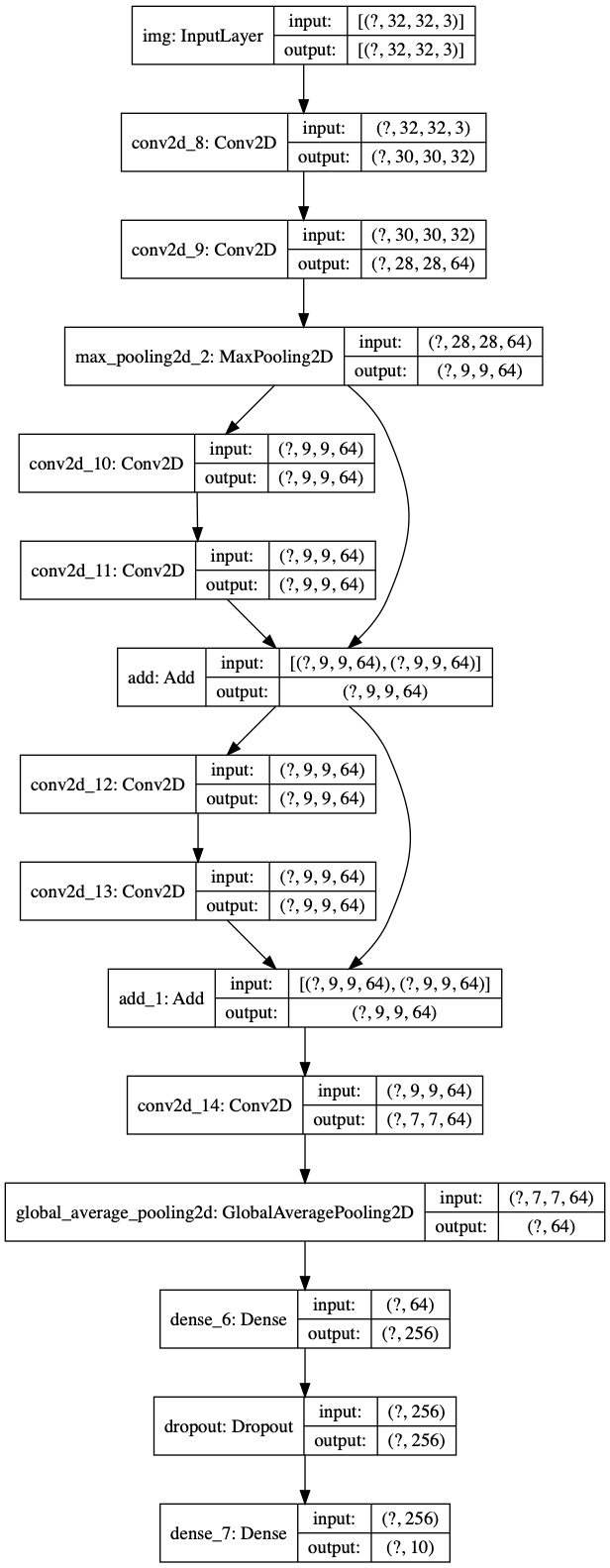参考keras官网
1 from keras import layers 2 import keras 3 import numpy as np 4 5 inputs = keras.Input(shape=(32, 32, 3), name="img") 6 x = layers.Conv2D(32, 3, activation="relu")(inputs) 7 x = layers.Conv2D(64, 3, activation="relu")(x) 8 block_1_output = layers.MaxPooling2D(3)(x) 9 10 x = layers.Conv2D(64, 3, activation="relu", padding="same")(block_1_output) 11 x = layers.Conv2D(64, 3, activation="relu", padding="same")(x) 12 block_2_output = layers.add([x, block_1_output]) 13 14 x = layers.Conv2D(64, 3, activation="relu", padding="same")(block_2_output) 15 x = layers.Conv2D(64, 3, activation="relu", padding="same")(x) 16 block_3_output = layers.add([x, block_2_output]) 17 18 x = layers.Conv2D(64, 3, activation="relu")(block_3_output) 19 x = layers.GlobalAveragePooling2D()(x) 20 x = layers.Dense(256, activation="relu")(x) 21 x = layers.Dropout(0.5)(x) 22 outputs = layers.Dense(10)(x) 23 24 model = keras.Model(inputs, outputs, name="toy_resnet") 25 model.summary() 26 27 # 绘制模型 28 keras.utils.plot_model(model, "mini_resnet.png", show_shapes=True) 29 30 # 训练模型 31 (x_train, y_train), (x_test, y_test) = keras.datasets.cifar10.load_data() 32 33 x_train = x_train.astype("float32") / 255.0 34 x_test = x_test.astype("float32") / 255.0 35 y_train = keras.utils.to_categorical(y_train, 10) 36 y_test = keras.utils.to_categorical(y_test, 10) 37 38 model.compile( 39 optimizer=keras.optimizers.RMSprop(1e-3), 40 loss="categorical_crossentropy", 41 metrics=["accuracy"], 42 ) 43 # We restrict the data to the first 1000 samples so as to limit execution time 44 # on Colab. Try to train on the entire dataset until convergence! 45 model.fit(x_train[:1000], y_train[:1000], batch_size=64, epochs=1, validation_split=0.2)
模型
